Growing Beets Indoors might sound like a challenge reserved for seasoned gardeners, but trust me, it’s easier than you think! Have you ever dreamt of harvesting vibrant, earthy beets right from your kitchen windowsill, even when the snow is falling outside? Well, dream no more! This DIY guide will unlock the secrets to cultivating these ruby-red gems within the cozy confines of your home.
Beets have a rich history, dating back to ancient times where their leafy greens were prized even more than the root itself. From Roman banquets to humble peasant meals, beets have nourished cultures for centuries. Today, we appreciate them for their nutritional power and delicious flavor. But let’s face it, not everyone has the space or climate for a traditional outdoor garden. That’s where indoor gardening comes in!
Imagine the satisfaction of snipping fresh beet greens for your salad or roasting your own homegrown beets for a hearty winter stew. Growing Beets Indoors allows you to enjoy fresh, organic produce year-round, regardless of your living situation. Plus, it’s a fantastic way to connect with nature, reduce your carbon footprint, and add a touch of vibrant green to your indoor space. So, grab your gardening gloves, and let’s get started on this exciting DIY adventure!
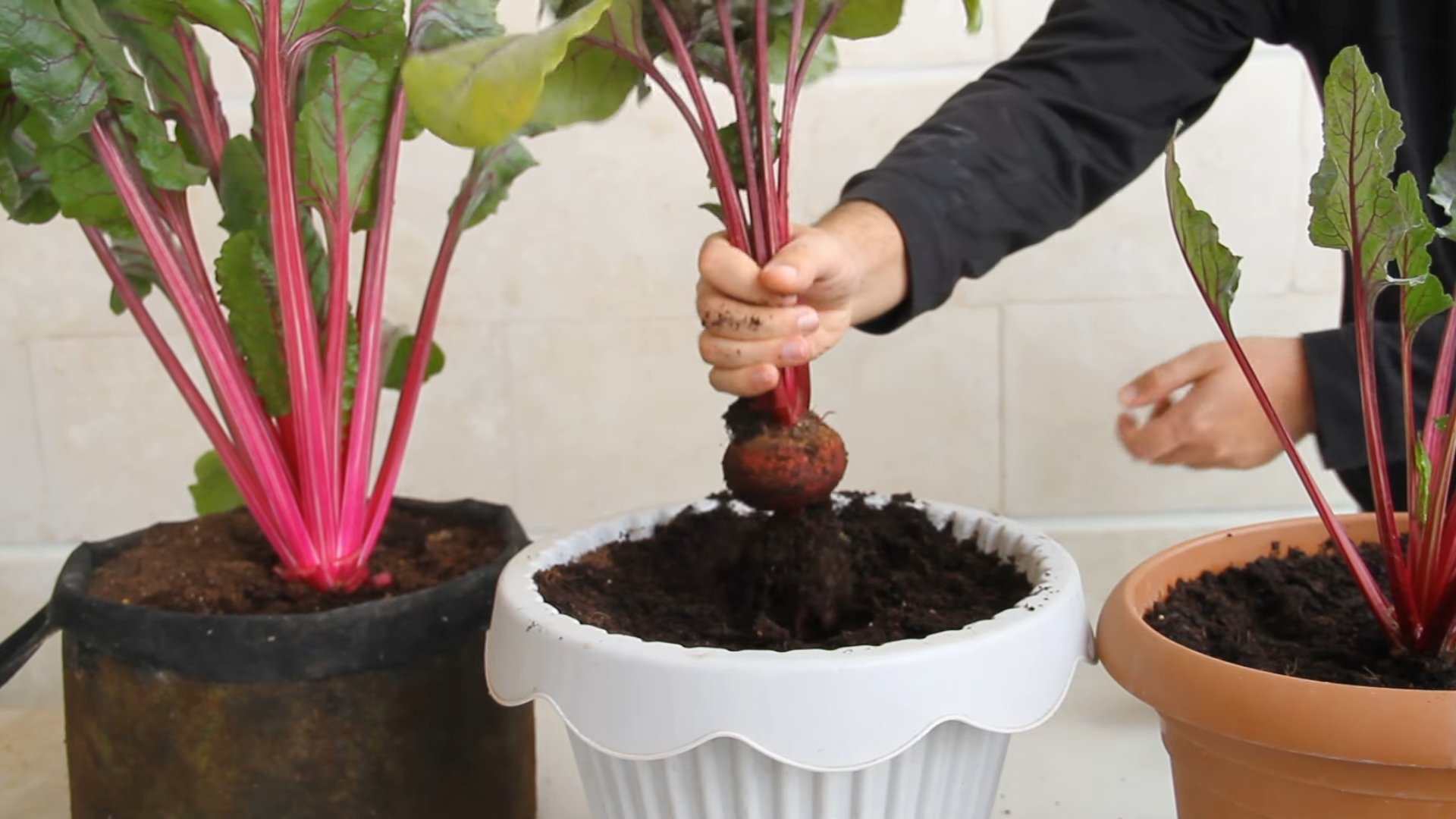
Growing Beets Indoors: A Beginner’s Guide
Hey there, fellow gardening enthusiasts! Ever thought about growing beets indoors? It’s totally doable, and honestly, it’s a rewarding experience, especially when you can enjoy fresh, homegrown beets even when the weather outside is frightful. I’ve been doing it for a while now, and I’m excited to share my tips and tricks with you. Let’s get started!
Choosing the Right Beet Variety
First things first, not all beet varieties are created equal when it comes to indoor growing. Some are just better suited for containers and limited space. Here are a few of my favorites:
* ‘Baby Beet’: As the name suggests, these are compact and perfect for smaller pots. They mature quickly, which is a huge plus when you’re itching for a harvest.
* ‘Early Wonder’: This is a classic choice, known for its reliable growth and delicious flavor. It’s relatively compact and does well in containers.
* ‘Detroit Dark Red’: Another popular variety, ‘Detroit Dark Red’ produces round, deep red beets. While they can get a bit larger than ‘Baby Beet,’ they’re still manageable indoors.
* ‘Golden Beet’: If you’re looking for something a little different, try ‘Golden Beet.’ They have a milder, sweeter flavor than red beets and add a pop of color to your indoor garden.
Gathering Your Supplies
Okay, now that we’ve picked our beet variety, let’s gather everything we need. Here’s a checklist:
* Beet Seeds: Obviously! Make sure you get them from a reputable source to ensure good germination rates.
* Containers: Choose pots that are at least 8-10 inches deep and wide. Beets need room to develop their roots. I prefer using fabric pots because they allow for better drainage and aeration.
* Potting Mix: Don’t use garden soil! It’s too heavy and doesn’t drain well. Opt for a high-quality potting mix that’s specifically formulated for containers. I like to use a mix that contains peat moss, perlite, and vermiculite.
* Grow Lights: Unless you have a super sunny windowsill, you’ll need grow lights. Beets need at least 6-8 hours of light per day. LED grow lights are energy-efficient and work great.
* Watering Can or Spray Bottle: For watering your beets.
* Fertilizer: A balanced liquid fertilizer (like 10-10-10) will help your beets thrive.
* Seed Starting Tray (Optional): If you want to start your seeds indoors before transplanting them to larger pots.
Planting Your Beet Seeds
Alright, let’s get our hands dirty! Here’s how to plant your beet seeds:
1. Prepare Your Containers: Fill your containers with potting mix, leaving about an inch of space at the top.
2. Sow the Seeds: Beet seeds are actually seed clusters, meaning each “seed” can produce multiple seedlings. Sow the seeds about 1/2 inch deep and 1-2 inches apart. If you’re using a larger container, you can plant more seeds, but make sure to thin them out later.
3. Water Gently: Water the soil gently until it’s evenly moist but not soggy.
4. Provide Light: Place your containers under grow lights or in a sunny windowsill.
5. Maintain Temperature: Beets germinate best at temperatures between 60-70°F (15-21°C).
Caring for Your Indoor Beets
Now that your beet seeds are planted, it’s time to nurture them. Here’s what you need to do:
1. Watering: Keep the soil consistently moist but not waterlogged. Water when the top inch of soil feels dry to the touch. Overwatering can lead to root rot, so be careful!
2. Lighting: Make sure your beets are getting enough light. If you’re using grow lights, keep them on for 14-16 hours per day. If you’re using a windowsill, rotate the containers regularly to ensure even growth.
3. Fertilizing: Start fertilizing your beets about 2-3 weeks after they germinate. Use a balanced liquid fertilizer diluted to half strength. Fertilize every 2-3 weeks.
4. Thinning: Once your seedlings have a few true leaves, it’s time to thin them out. This means removing some of the seedlings to give the remaining ones more space to grow. Choose the strongest seedlings and snip off the weaker ones at the soil level. Aim for a spacing of about 2-3 inches between plants.
5. Temperature: Beets prefer cooler temperatures, around 60-70°F (15-21°C). Avoid placing them near heat sources.
6. Pest Control: Keep an eye out for pests like aphids and spider mites. If you spot any, you can try spraying them with insecticidal soap or neem oil. I usually just wipe them off with a damp cloth.
Harvesting Your Beets
The moment we’ve all been waiting for! Harvesting your beets is the most rewarding part of the process. Here’s how to do it:
1. Check for Size: Beets are typically ready to harvest when the roots are about 1-3 inches in diameter, depending on the variety. You can gently brush away some of the soil around the base of the plant to check the size of the root.
2. Harvest Carefully: Gently loosen the soil around the beet and pull it out of the container. Be careful not to damage the root.
3. Enjoy Your Harvest: Wash the beets thoroughly and enjoy them in your favorite recipes. You can also eat the beet greens! They’re delicious sautéed or added to salads.
Troubleshooting Common Problems
Even with the best care, you might encounter some problems along the way. Here are a few common issues and how to address them:
* Poor Germination: If your beet seeds aren’t germinating, make sure the soil is moist and the temperature is warm enough. You can also try soaking the seeds in water for 24 hours before planting.
* Leggy Seedlings: If your seedlings are tall and spindly, they’re probably not getting enough light. Move them closer to the grow lights or to a sunnier location.
* Yellowing Leaves: Yellowing leaves can be a sign of nutrient deficiency. Try fertilizing your beets with a balanced liquid fertilizer.
* Root Rot: Root rot is caused by overwatering. Make sure your containers have good drainage and allow the soil to dry out slightly between waterings.
* Pests: As mentioned earlier, keep an eye out for pests and treat them promptly.
Extra Tips for Success
Here are a few extra tips that I’ve learned over the years:
* Succession Planting: To enjoy a continuous harvest of beets, sow new seeds every 2-3 weeks.
* Companion Planting: Beets grow well with other vegetables like lettuce, spinach, and onions.
* Use Fabric Pots: I swear by fabric pots! They allow for better drainage and aeration, which helps prevent root rot.
* Don’t Overcrowd: Give your beets enough space to grow. Thin them out regularly to prevent overcrowding.
* Have Fun!: Growing beets indoors should be an enjoyable experience. Don’t be afraid to experiment and learn from your mistakes.
Growing beets indoors is a fun and rewarding project that anyone can do. With a little bit of care and attention, you can enjoy fresh, homegrown beets all year round. So, grab your seeds, get your hands dirty, and start growing! Happy gardening!
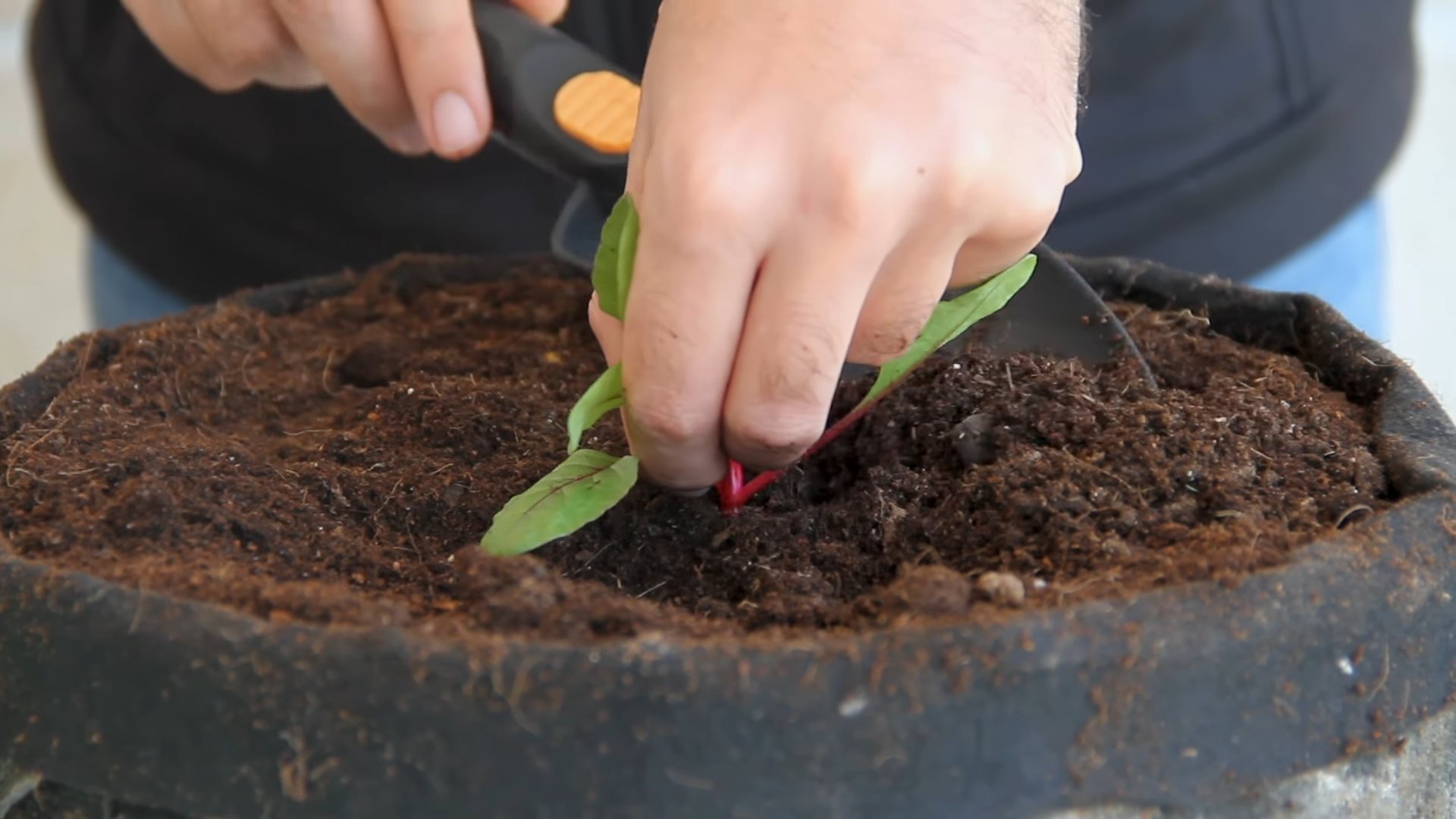
Conclusion
So, there you have it! Growing beets indoors might seem like a challenge, but with a little patience and the right approach, you can enjoy fresh, homegrown beets even without a sprawling garden. This DIY trick is a must-try for several compelling reasons. First and foremost, it offers a sustainable way to access fresh produce, reducing your reliance on store-bought vegetables and minimizing your carbon footprint. Imagine the satisfaction of harvesting vibrant, earthy beets from your own indoor garden, knowing exactly where they came from and how they were grown.
Beyond the environmental benefits, growing beets indoors provides a unique opportunity to connect with nature and cultivate a green space within your home. The process of nurturing these root vegetables from seed to harvest can be incredibly rewarding, offering a sense of accomplishment and a welcome distraction from the stresses of daily life. Plus, fresh beets are packed with nutrients, making them a healthy and delicious addition to your diet.
But the advantages don’t stop there. Indoor beet cultivation allows you to control the growing environment, protecting your plants from pests, diseases, and unpredictable weather conditions. This means you can enjoy a consistent supply of beets throughout the year, regardless of the season. And let’s not forget the aesthetic appeal of having lush, leafy greens adorning your windowsill or grow room.
Now, let’s talk about variations. While the basic steps outlined in this guide will set you on the right path, feel free to experiment with different beet varieties. Consider trying ‘Detroit Dark Red’ for its classic flavor and deep color, or ‘Golden’ beets for a sweeter, milder taste. You can also explore different container sizes and growing mediums to find what works best for your space and preferences.
Another exciting variation is to focus on growing beet greens. Beet greens are incredibly nutritious and can be used in salads, stir-fries, and other culinary creations. If you’re primarily interested in the greens, you can harvest them regularly while allowing the roots to develop more slowly. This approach can provide a continuous supply of fresh greens throughout the growing season.
Don’t be afraid to get creative with your indoor beet garden. You can even incorporate companion plants, such as herbs or flowers, to enhance the growing environment and attract beneficial insects. The possibilities are endless!
Ultimately, the success of your indoor beet growing endeavor depends on your willingness to experiment, learn, and adapt. Pay close attention to your plants’ needs, adjust your watering and lighting as necessary, and don’t be discouraged by occasional setbacks. Remember, even experienced gardeners encounter challenges along the way.
We wholeheartedly encourage you to try this DIY trick and experience the joy of growing your own beets indoors. It’s a rewarding, sustainable, and delicious way to connect with nature and enhance your culinary creations. Once you’ve embarked on your indoor beet growing journey, we’d love to hear about your experiences. Share your tips, tricks, and photos in the comments section below. Let’s create a community of indoor beet enthusiasts and inspire others to embrace the joys of homegrown produce. Happy growing! Let us know if you have any questions about **growing beets indoors**!
Frequently Asked Questions (FAQ)
What is the best time of year to start growing beets indoors?
You can start growing beets indoors at any time of year, as you’re controlling the environment. However, starting in the late winter or early spring can be advantageous, as the seedlings will benefit from the increasing natural light as they grow. This can reduce the need for supplemental lighting. If you’re starting in the fall or winter, be sure to provide adequate artificial light to ensure healthy growth.
How much light do beets need when grown indoors?
Beets require at least 6-8 hours of direct sunlight per day. If you don’t have a sunny windowsill, you’ll need to supplement with grow lights. Fluorescent or LED grow lights are excellent options. Position the lights a few inches above the seedlings and adjust as they grow. A good rule of thumb is to provide 14-16 hours of light per day during the vegetative stage and then reduce it slightly as the beets mature.
What type of soil is best for growing beets indoors?
Beets prefer well-draining, loose soil that is rich in organic matter. A good potting mix specifically formulated for vegetables is ideal. You can also create your own mix by combining equal parts of potting soil, compost, and perlite or vermiculite. Avoid using heavy clay soil, as it can impede root development.
How often should I water my indoor beet plants?
Water your beet plants regularly, keeping the soil consistently moist but not waterlogged. Check the soil moisture by sticking your finger about an inch deep. If it feels dry, it’s time to water. Avoid overwatering, as this can lead to root rot. Ensure that your containers have drainage holes to allow excess water to escape.
What size container is needed for growing beets indoors?
Choose a container that is at least 8-10 inches deep and wide to allow sufficient space for the roots to develop. Larger containers are generally better, as they provide more room for growth and help to retain moisture. You can grow multiple beets in a single container, but be sure to space them adequately to prevent overcrowding.
How long does it take for beets to mature when grown indoors?
Beets typically take 50-70 days to mature, depending on the variety and growing conditions. You can start harvesting the greens earlier, as needed. The roots are ready to harvest when they reach the desired size, typically 2-3 inches in diameter.
How do I know when my beets are ready to harvest?
The size of the beet root is the best indicator. Gently brush away some soil to check the size. You can also harvest a few beets early to thin out the planting and enjoy baby beets. The greens are also edible and can be harvested at any time.
What are some common problems when growing beets indoors and how can I fix them?
Some common problems include:
* **Leggy seedlings:** This is usually caused by insufficient light. Provide more light or move the seedlings closer to the light source.
* **Yellowing leaves:** This can be caused by overwatering, underwatering, or nutrient deficiencies. Adjust your watering schedule and fertilize with a balanced fertilizer.
* **Pests:** Aphids and spider mites can sometimes infest indoor plants. Inspect your plants regularly and treat any infestations with insecticidal soap or neem oil.
* **Root rot:** This is caused by overwatering and poor drainage. Ensure that your containers have drainage holes and avoid overwatering.
Can I grow beets from seed indoors?
Yes, growing beets from seed indoors is the most common and recommended method. Start by sowing the seeds directly into your chosen container, about 1/2 inch deep. Keep the soil moist and warm until germination, which usually takes 5-10 days.
Do I need to fertilize my indoor beet plants?
Yes, beets benefit from regular fertilization. Use a balanced fertilizer (e.g., 10-10-10) diluted to half strength. Fertilize every 2-3 weeks during the growing season. You can also use organic fertilizers, such as compost tea or fish emulsion.
Can I transplant beet seedlings that I started indoors to an outdoor garden?
Yes, you can transplant beet seedlings outdoors, but it’s important to harden them off first. This involves gradually exposing the seedlings to outdoor conditions over a period of 1-2 weeks. Start by placing them in a sheltered location for a few hours each day, gradually increasing the amount of time they spend outdoors. This will help them acclimate to the sun, wind, and temperature changes.
Are beet greens edible?
Yes, beet greens are highly nutritious and delicious. They can be used in salads, stir-fries, soups, and other dishes. Harvest the outer leaves as needed, leaving the inner leaves to continue growing.
How do I store harvested beets?
Remove the greens, leaving about an inch of stem attached. Gently brush off any excess soil. Store the beets in a cool, dark, and humid place, such as a refrigerator crisper drawer. They can last for several weeks when stored properly. The greens should be stored separately in a plastic bag in the refrigerator and used within a few days.

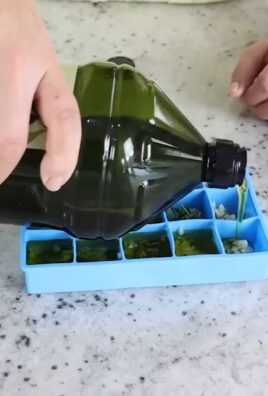
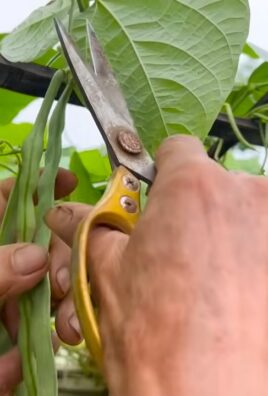
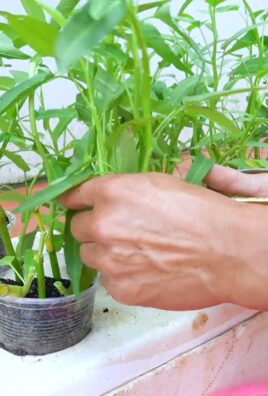
Leave a Comment